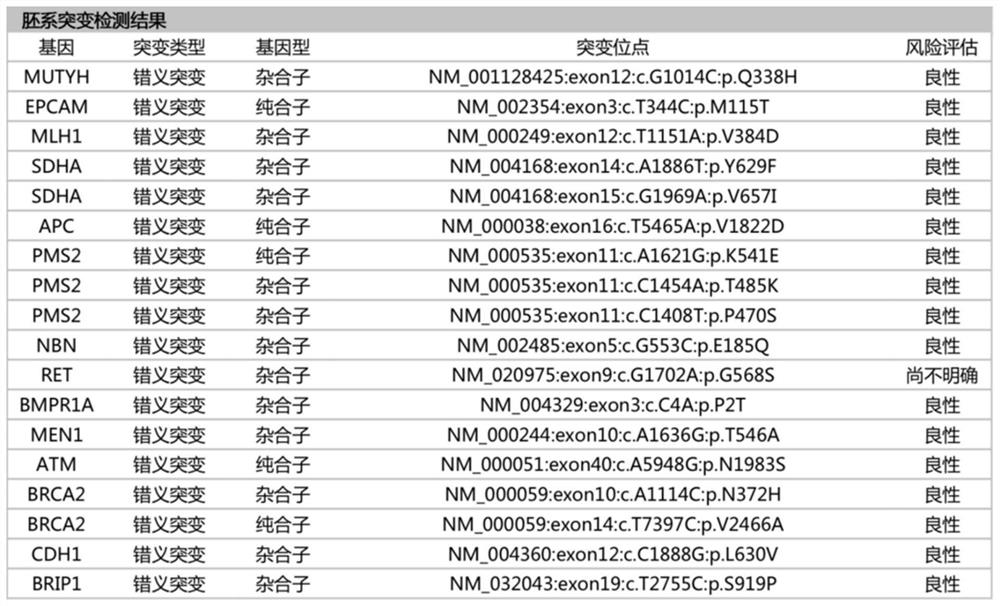Gastric cancer detection panel based on next-generation sequencing technology and application of gastric cancer detection panel
A second-generation sequencing technology and second-generation sequencing technology are applied in the field of gastric cancer detection panels, which can solve problems such as non-uniformity and achieve the effect of reducing costs.
- Summary
- Abstract
- Description
- Claims
- Application Information
AI Technical Summary
Problems solved by technology
Method used
Image
Examples
Embodiment
[0031] Step 1. Take a patient's cancer tissue and blood samples to extract DNA. The kits used are TIANGENTGuide Cells / Tissue Genomic DNA Kit and TIANGENT TGuide Large Volume BloodGenomic DNA Kit (1-3ml).
[0032] Step 2, DNA sample library preparation. First use the Bioruptor UCD-300 non-contact automatic ultrasonic breaker to randomly interrupt the DNA, ctDNA does not need this step. Take 400ng of DNA, dilute it to 50μl with nuclease-free water, transfer it to a 0.5mL Eppendorf LoBind Tube, mix well, centrifuge briefly and put it on ice for use. Place the sample: Place the centrifuge tubes symmetrically (if there is a single tube, add water to the empty tube to balance), tighten the rotor, place it on the ice box, and pre-cool for 1-2 minutes. 150 ~ 200bp ultrasonic break. Repeat the previous step of ultrasonic crushing, a total of 9 cycles, and end in about 90 minutes. The library was then prepared using the KAPA library construction kit.
[0033] Step 3, RNA probe prepa...
PUM
 Login to View More
Login to View More Abstract
Description
Claims
Application Information
 Login to View More
Login to View More - R&D
- Intellectual Property
- Life Sciences
- Materials
- Tech Scout
- Unparalleled Data Quality
- Higher Quality Content
- 60% Fewer Hallucinations
Browse by: Latest US Patents, China's latest patents, Technical Efficacy Thesaurus, Application Domain, Technology Topic, Popular Technical Reports.
© 2025 PatSnap. All rights reserved.Legal|Privacy policy|Modern Slavery Act Transparency Statement|Sitemap|About US| Contact US: help@patsnap.com



